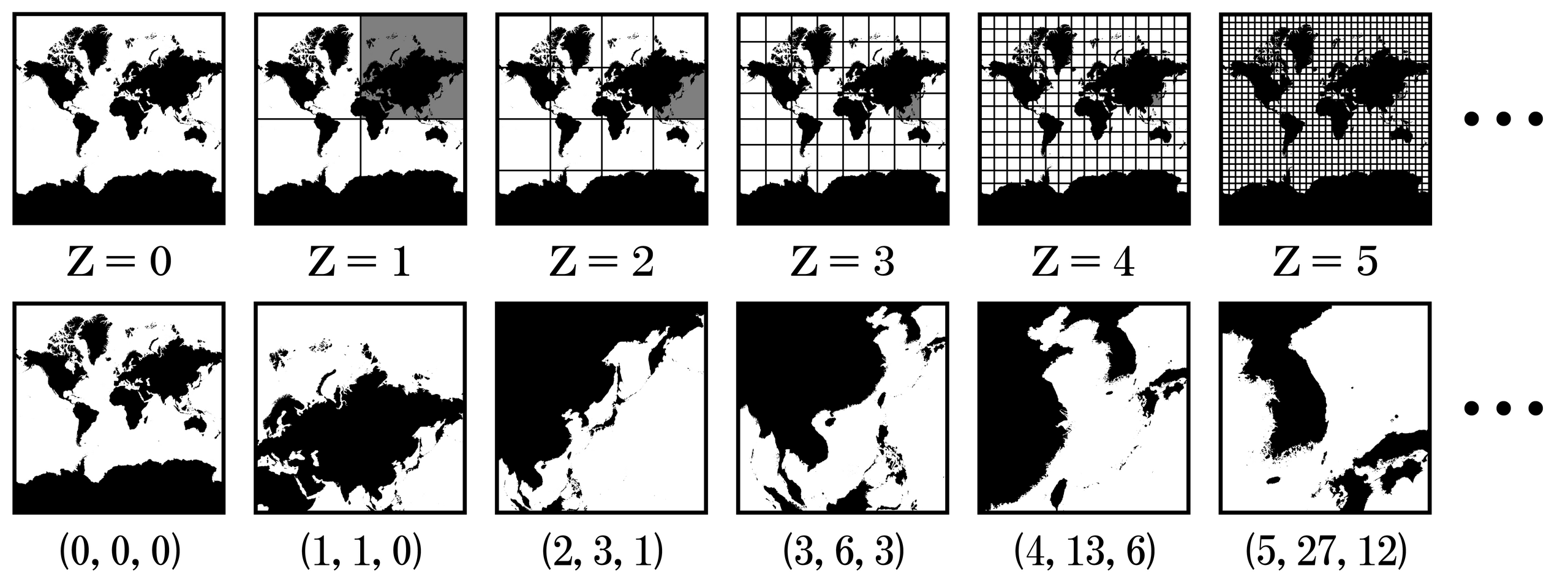4.0 KiB
Mapping in JavaScript
Today
- Discuss types of maps & appropriate library choices.
- Explore examples in D3, Leaflet, and MapLibreGL.
Which Tool?
What kind of map?
Abstract/geometric representation of data.
D3 will provide the most flexibility & can use existing tools for color scales/interactivity/etc.
Map w/ Cartographic Features
A different library will be necessary. Depending on needs raster or vector tiles.
Choropleths in D3
https://d3-graph-gallery.com/graph/choropleth_basic.html
Projection
https://d3-graph-gallery.com/graph/backgroundmap_changeprojection.html
Leaflet and MapLibreGL Choropleths
- Projection choice constrained by tile layers.
- Need additional libraries (or pure JS) for interactivity & other graphics.
Demo/Tutorial: https://leafletjs.com/examples/choropleth/
Base Maps
Instead of starting with a blank slate, it can be helpful to have a base map, but a base map is often comprised of many feature layers:
- Country/Ocean borders
- National Sub-divisions
- Roads
- Terrain
- Points of Interest
- ...
Drawing all of these layers adds up.
Raster Tiles
An innovation that made web mapping scalable in the mid-2000s was pre-rendering base layers into image tiles.
Raster Tiles
Pros
- Simple to serve: just a lot of images.
- Each image at a zoom level ~approx same size.
- 100% consistent rendering.
- Any kind of imagery (watercolor, satellite maps, etc.)
- Minimal client-side processing needed.
- Good for dense data.
Cons
- Fixed zoom levels and projection.
- Large file sizes for large Z.
- Need to create variants for all desired permutations of features.
- No modifications to styling after the fact.
Vector Tiles
Instead of images, data is sent as images.
- Can create multiple variations per JSON, change road colors/etc without regenerating millions of images.
- Can be more efficient on bandwidth.
- Significantly more complexity on client and server side.
- Older devices may struggle to render them.
- Rendering relies on client library, can vary.
- Not suitable for dense data such as satellite imagery.
Blog Post from today on OSM switch to Vector tiles: https://tech.marksblogg.com/osm-mvt-vector-tiles.html
Leaflet
Raster Tiles w/ Vector Layer on Top
https://leafletjs.com/reference.html
(Has plugins to use Vector Tiles via MapLibreGL)
MapLibreGL
Vector-tile based library. Community fork of MapboxGL.
Mapbox is an innovator in the space, but also quite expensive.
MaplibreGL/MapboxGL are mostly compatible.
General Workflow
- Use library to render map(s) to div(s) on page.
- Pick base layer, either raster or vector.
- If vector, possibly apply additional styling to base.
- Add additional vector layers based on your data & its features.
- Attach event handlers for interactivity on your features and/or input elements adjacent to the map.
Pop-ups
Leaflet/MapLibre offer a simple API for adding pop-ups to features.
Reminder: hover/pop-up alone is not enough interactivity for final product.
Examples
Leaflet & MapLibre examples
Custom Base Layers
- Stadia Maps Hosted Tiles, free for noncommercial/academic use. You will need an account though.
- OpenMapTiles - free, meant for self hosting.
- Mapbox - another paid solution, $
.
Other Libraries
- Deck.gl - Alternative renderer similar to Map*GL. TypeScript/React focused mostly, hard to use with JS we covered.
- OpenLayers -
- Cesium - 3D-focused geospatial.
- Note: You can also get 3D rendering w/ D3 or MapLibreGL.


